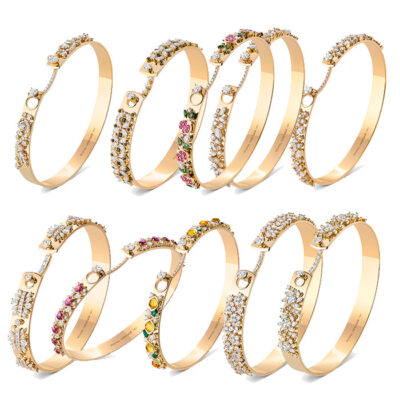Style
09 February 2020
Share
Marisol’s hair sculptures
For me, Marisol’s spectacular braided hairstyle evoked the 18th century pouffes worn by Marie-Antoinette. You can find out more on pages 24/25 of my children’s book on hairstyles and jewelry, “Coiffes et Parures”.
By Sandrine Merle.
Marisol is completely absorbed by her material. Not content to be the queen of the dry haircut or to have developed a subtly-shaded blond coloring, she also creates highly original accessories and spectacular hairpieces. “It all began in the late 1990s when I was artistic director at Toni and Guy,” she says. “At night, I’d go home with whole bags of cut hair.” Some people knit to relax; Marisol would gather strands together, weaving and plaiting them, and experiment by sticking them together or burning them. Her artistic approach features the braid, which returns as a leitmotiv in a nod to childhood and fairy tales.
Boldness is all…
Her work is atypical and incredibly daring. It arouses dumbfounded amazement because it takes a bold spirit to use natural or synthetic hair (sometimes a mixture) to make combs, hairclips, hats and handbags! Today this physical attribute is associated with mourning, illness or even poverty. The sunny-natured, merry Marisol is not trying to be provocative: “Hair is death, but it’s life as well! ” In China, Miao women keep hair that is cut or falls out and add it to their wigs, and as these are passed down from generation to generation, the hair forms a lifeline.
Sentimental hair
Marisol finds hair incredibly poetic: “it certainly doesn’t deserve to be carelessly swept up into a waste bin.” In her two studio salons (in the Marais and at Le Bon Marché), the walls are lined with pretty frames, with arrangements of braided blond hair, brown locks tied together with a velvet ribbon, etc. under glass. Each represents a tribute to a grandmother, a friend undergoing chemotherapy, a little girl getting a taste of freedom, and so on. In this way, Marisol revives the 19th century tradition of artworks made with hair (including jewelry): mementoes of loved ones when there was no picture of them.
Conceptual hair
My favorite creation of hers is this monumental sculpture, simultaneously lavish and playful, made with two types of braids, in dark and fair hair. It’s rather like an embroidered crown, a halo, or an 18th century pouffe. Some might be reminded of a Ukrainian hairstyle. Fashion fans will make the connection with the conceptual approach of Martin Margiela, whom Marisol worked with on his shows. Hair was omnipresent with this Belgian designer, whose father was… a hairdresser. In the early 2000s, he turned a wig inside out to make a top, and accumulated several to make a jacket.
Marisol produces ingenious, rare, extremely personal work worthy of an artist. In the past, the Vitra Museum and the Centre Pompidou have exhibited her pieces as art. She achieves a perfect synthesis between art and tradition, past and modernity, meaning and aestheticism. A new kind of beauty with a complex alchemy: the Holy Grail of all creators.
Banner image © Katrin Backes
Related article:
“Coiffes et Parures” at Éditions Palette…














